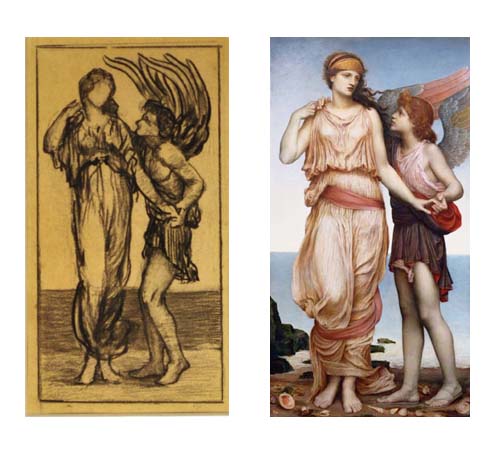It is always exciting to examine paintings in order to discover the layers of paint and the correlation between these layers and the changing intentions of the artist. Evelyn De Morgan's work however, is characterised by her efficiency in applying paint to the canvas and the resulting lack of alterations. Evelyn created many preparatory drawings for each painting, both compositional sketches and detailed studies of individual elements, and thus by the time she put paint to canvas she had a pretty good idea in her mind of how she wanted her completed work to look.
Upon examination of one of Evelyn’s earliest paintings Venus and Cupid (1878) it was fascinating to discover that the position of Cupid’s wings changed during the progress of the painting.
The painting has recently undergone conservation and our conservator Carol Willoughby of The Painting Conservation Studio revealed the changes after she removed a layer of varnish and cleaned the painting – allowing the underpainting to become apparent. She traced the altered position of the wing onto acetate so that we have a record of the change.
Tracing of the underpainting (above and left)
Interestingly the original placement of the wings correlates to a quick compositional sketch (below – left) from our collection. Comparison of this sketch with the final painting (below right) shows other changes as well; the sash on Venus's dress is lower and the overall position of Cupid has changed. With his bent knee and altered head position, the Cupid in the sketch is more dynamic and emotionally overt – beseeching Venus to give back his arrows.
We will probably never know why Evelyn became unsatisified with her initial composition, but the final result presents a more passive and statuesque image than the initial composition and it is possible she felt this would be a more commercially successful image.









